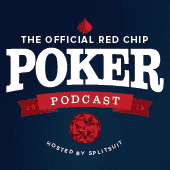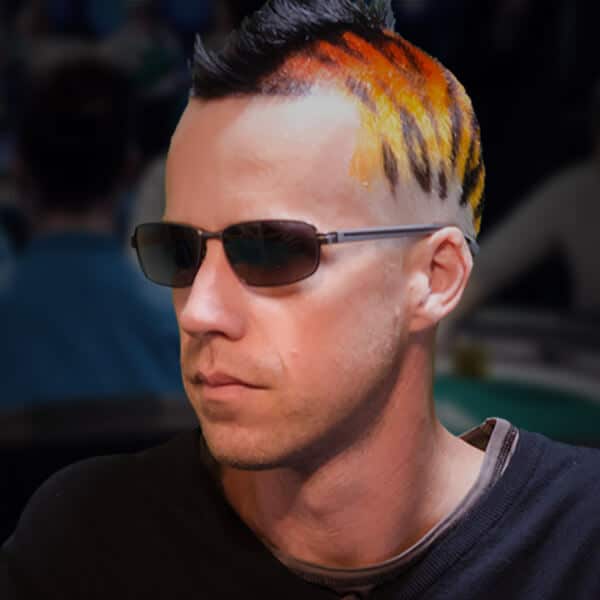We lose more money from the blinds than we do from any other position in poker. Does that mean we’re just gonna take it lying down? Of course not.
On this week’s episode, Mike Gano joins us for an awesome in-depth discussion of how to play from the small blind and big blind in no limit hold ’em. (He’s got a webinar going on that’s all about the subject.) Gano gives an absolute clinic on the many concepts and strategies you need to keep in mind to stem the bleeding and fight back in these loss-heavy positions. His framework-based approach gives his students the structure they need to implement advanced concepts steadily and successfully, with an adaptable strategy that applies in any number of situations.
For the 40 minutes we were lucky enough to pick coach Gano’s brain, we captured the whirlwind of his strategic prowess here for posterity… you might want to listen to this a few times to soak up all the information.

Introducing Mike Gano

Gano tells us about how he got into poker, and how his career evolved into becoming a coach and running Poker in a Box, which is primarily a strategy blog (go read, it’s good stuff!)
Before we dig into blind play strategy, Shaw asks Gano about his Climbing the Stakes series (available to Red Chip Poker PRO members), where he chronicles the various strategic adjustments one must make as one climbs from 10NL to 25NL, 50NL, 100NL, 200NL and up. It was produced essentially by popular demand from Gano’s fans and followers, who were making the journey themselves and wanted to know how their game would have to adapt before taking the plunge.
Broad Strokes on Blind Play
The first broad piece of advice Gano drops: Don’t fear the blinds. He explains how much emotion there is behind bad decisions in the blinds, for example, defending indiscriminately because you already have money out there and don’t want it stolen. Conversely, players are often afraid of being too aggressive or too loose in the blinds, because it often means calling a raise or even 3-betting.
Why do players lose the most in the blinds? Gano says that on the one hand, we shouldn’t be alarmed. With a forced bet, we are going to lose money in this spot. But more importantly, many players are playing too tight in the blinds compared to other positions.
These players are folding too much and missing out in value, they could be calling or 3-better. Then there are players who try to correct this, but things fall apart post-flop, because they continue to fold too much.
Widen Ranges
Gano encourages players to not just widen their range in the blinds, but widen your range across the board.
“You want to avoid being purely exploitable,” he says. “You don’t want to be in a spot where you’re allowing the button to raise any two cards.”
“It’s actually more than that… It’s actually playing every hand you’re dealt in the most profitable way you can. If calling or 3-betting pocket twos is more profitable in the small blind than folding it,” he said.
With the right post-flop skills, you will find yourself playing more hands across the board.
Small Blind vs. Big Blind
Gano says be mindful that your implied odds are reduced in the small blind. The big blind closes action and costs you less. Tighter in the small blind vs. the big blind when fighting an open is his general advice.
3-Betting from the Blinds
Gano echoes Ed Miller’s advice, “3-Betting from the Blinds Shouldn’t Be Scary.”
He points out that players who are afraid to 3-bet from the blind have it backwards if they’re avoiding doing so because they’re scared of playing post-flop. Obviously, calling guarantees you play post-flop, whereas a 3-bet will fold out a bunch of hands and let you pick up the pot uncontested.
The inflation of the pot is another factor behind the fear. Players might fear “bloating the pot”. But again, if we have superior skill vs. our opponents, bigger pots magnify the value of their mistakes.
Pre-Flop and Post-Flop Process
“Our job is to put our opponent on a range, to recognize his tendencies, and to take in any other factors or information about this hand,” Gano says about his pre-flop and post-flop framework.
Once you’ve established this thought process, Gano says, you’ll be able to start planning your post-flop actions, through the turn and to the river. You plan streets of value, whether you’ll be barreling, etc.
Gano describes how common lines and scenarios come up again and again, building intuition not just from the blinds but from every position.
In addition to this general framework for your poker strategy thought process, Gano recommends being tuned to specific techniques to deal with specific scenarios.
“Anything that anyone does that strikes fear in your or make you nervous is grounds to come up with ideas on what you could do yourself,” he says.
“What you have to be careful of is if you are nervous about playing post-flop and you feel out of position you suck, and to avoid that you don’t call as much, and you clam up in the blinds… you’re just putting a temporary Band-Aid on the thing,” he says. “You need to move towards playing the most profitable way you can.”
Coaching Spotlight
Gano gives some invaluable insight to how he studies. He plays hands, marks them as he goes, then when he does hand reviews, he categorizes those reviews into focal points for his next session.
“In order to learn something, it takes repetition,” he says.
Making sure the focal points that will patch your leaks are top-of-mind all the time is key. Doing regular hand reviews is the best way to find out what you need to focus on.
Gano also goes into detail sharing his process for doing session reviews and other coaching work with his students.
Beauty and the Blinds
Getting back to the topic at hand, Gano remarks how “beautiful” it is to be in the blinds because you can now represent basically anything. And along the same lines, when you do smash a flop like A62 with a hand like 62, you often will get many streets of value from an ace.
“There’s something magical that happens when you widen your range,” Gano says.
He cautions players to make small adjustments when widening their range. It’s important to develop experience in these spots before fundamentally changing the way you play. Like any powerful tool, a wider range in the blinds can be dangerous if you don’t fully understand how to use it.
He reiterates that widening pre-flop ranges in the blinds requires post-flop skills and experience.
Mental Game
Eating well, sleeping well, and getting exercise are all key aspects of mental game, Gano says. But he also firmly believes that having healthy relationships and being a good person while doing good are very important off-table factors that impact your on-table play. Having your life in order decreases stress, makes you less susceptible to tilt, and makes poker more fun and profitable overall.
He points out that many players have a warped sense of what it takes to be profitable in poker. Grinding it out 24/7 in the poker room or online, getting no sleep, eating crappy food is no way to be successful. There’s a reason you see so many of the players who are at the top of their games getting in shape, eating well, and extolling the virtues of a solid night’s sleep.
Don’t miss Gano’s webinar on blind play, and good luck out there!
